The Enhanced Photo-Electrochemical Detection of Uric Acid on Au Nanoparticles Modified Glassy Carbon Electrode
- PMID: 28709376
- PMCID: PMC5509567
- DOI: 10.1186/s11671-017-2225-3
The Enhanced Photo-Electrochemical Detection of Uric Acid on Au Nanoparticles Modified Glassy Carbon Electrode
Abstract
In this work, a sensitive and novel method for determining uric acid (UA) has been developed, in which the glassy carbon electrode (GCE) was modified with electrodeposition Au nanoparticles and used to monitor the concentration of UA with the assistant of visible light illumination. The morphology of the Au nanoparticles deposited on GCE surface were characterized by scanning electron microscope (SEM) and the nanoparticles were found to be well-dispersed spheres with the average diameter approaching 26.1 nm. A series of cyclic voltammetry (CV) and differential pulse voltammetry (DPV) measurements have revealed that the introduction of visible light can greatly enhance both the strength and stability of response current due to the surface plasmon resonance (SPR). Specifically, the DPV showed a linear relationship between peak current and UA concentration in the range of 2.8 to 57.5 μM with the equation of I pa (μA) = 0.0121c UA (μM) + 0.3122 (R 2 = 0.9987). Herein, the visible light illuminated Au/GCE possesses a potential to be a sensitive electrochemical sensor in the future.
Keywords: AuNPs; Uric acid; Visible light.
Conflict of interest statement
Publisher’s Note
Springer Nature remains neutral with regard to jurisdictional claims in published maps and institutional affiliations.
Figures
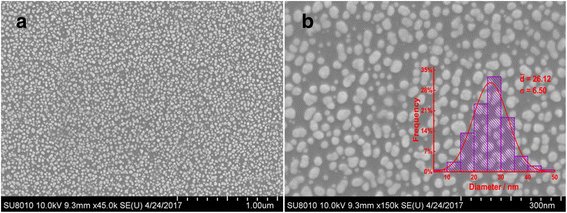
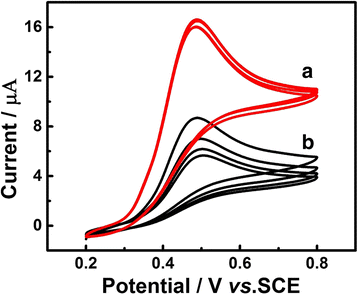
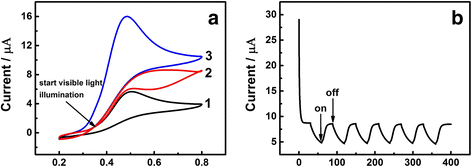
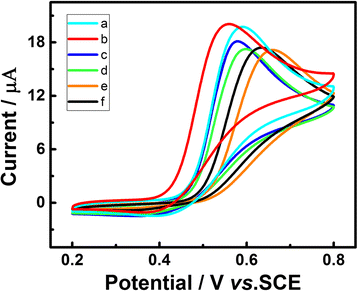
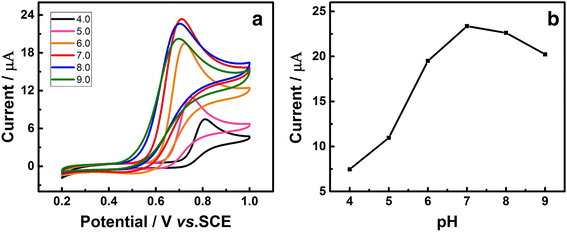
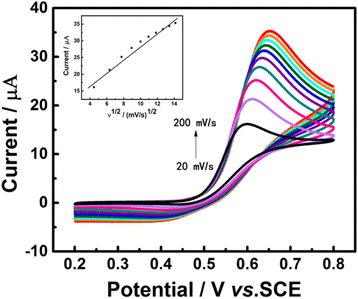
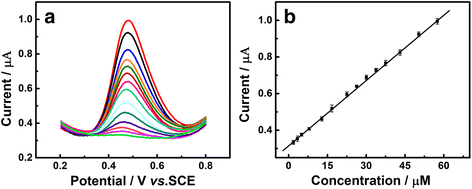
Similar articles
-
Selective detection of dopamine in the presence of uric acid using a gold nanoparticles-poly(luminol) hybrid film and multi-walled carbon nanotubes with incorporated β-cyclodextrin modified glassy carbon electrode.Talanta. 2011 Oct 15;85(5):2344-51. doi: 10.1016/j.talanta.2011.07.067. Epub 2011 Jul 27. Talanta. 2011. PMID: 21962652
-
N-Doped Reduced Graphene Oxide/Gold Nanoparticles Composite as an Improved Sensing Platform for Simultaneous Detection of Dopamine, Ascorbic Acid, and Uric Acid.Sensors (Basel). 2020 Aug 7;20(16):4427. doi: 10.3390/s20164427. Sensors (Basel). 2020. PMID: 32784787 Free PMC article.
-
Highly sensitive electrochemical determination of Sunset Yellow based on the ultrafine Au-Pd and reduced graphene oxide nanocomposites.J Colloid Interface Sci. 2016 Nov 1;481:229-35. doi: 10.1016/j.jcis.2016.07.061. Epub 2016 Jul 25. J Colloid Interface Sci. 2016. PMID: 27475710
-
Electrochemical synthesis of polyaniline nano-networks on p-aminobenzene sulfonic acid functionalized glassy carbon electrode Its use for the simultaneous determination of ascorbic acid and uric acid.Biosens Bioelectron. 2008 Dec 1;24(4):690-5. doi: 10.1016/j.bios.2008.06.025. Epub 2008 Jun 22. Biosens Bioelectron. 2008. PMID: 18706798
-
Hybrid carbon nanotubes modified glassy carbon electrode for selective, sensitive and simultaneous detection of dopamine and uric acid.Ecotoxicol Environ Saf. 2020 Sep 15;201:110872. doi: 10.1016/j.ecoenv.2020.110872. Epub 2020 Jun 16. Ecotoxicol Environ Saf. 2020. PMID: 32559693
Cited by
-
Facile One-Step Electrodeposition Preparation of Cationic Pillar[6]arene-Modified Graphene Films on Glassy Carbon Electrodes for Enhanced Electrochemical Performance.Front Chem. 2020 Jun 4;8:430. doi: 10.3389/fchem.2020.00430. eCollection 2020. Front Chem. 2020. PMID: 32582632 Free PMC article.
References
-
- Dai X, Fang X, Zhang C, Xu R, Xu B. Determination of serum uric acid using high-performance liquid chromatography (HPLC)/isotope dilution mass spectrometry (ID-MS) as a candidate reference method. J Chromatogr B Analyt Technol Biomed Life Sci. 2007;857(2):287–95. doi: 10.1016/j.jchromb.2007.07.035. - DOI - PubMed
LinkOut - more resources
Full Text Sources
Other Literature Sources

